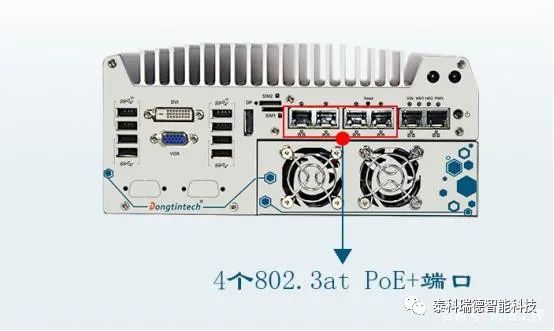The manufacturing process is always being reassessed to discover ways to improve productivity and reduce costs. Ultimately, the introduction of industrial automation has changed the way this efficiency is achieved. This is accomplished through the use of control systems that can handle multiple machines and complete tasks that were once performed by human employees.
In the 1970s, Programmable Logic Controllers (PLC) were introduced for this purpose. They automated processes, machine functions, and even entire production lines within manufacturing plants. By the 1990s, Industrial PCs began to take on roles in industrial automation due to their higher processor speeds, smaller footprint, and lower costs.
Today, advancements in both technologies have allowed each device to hold a place in the industry. While both are popular in automation, it is easy to question their individual capabilities and argue a case for higher-level controllers.
Key Functional Differences
PLC operates by continuously monitoring inputs received from other devices and then “deciding” how to respond to those inputs based on its programming. This is all supported by an operating system (OS) specifically designed for such control tasks. Although this strict OS design limits the capabilities of PLCs, their single-purpose nature also means they can operate without antivirus software and registry cleaners. Thus, all their operational tasks can be dedicated to control operations.
Industrial PCs perform the same control tasks, but their operating systems allow them to run programs and applications that PLCs cannot. This means that the device can be used not only for control purposes but also to leverage situations with limited space. Their added capabilities may make them susceptible to network attacks, but modern firewalls and cybersecurity methods make this an easily surmountable factor.
Construction
In terms of construction, both are designed to operate in harsh industrial conditions such as factory floors. Keep in mind that we are not comparing PLCs to regular consumer PCs. Industrial PCs are: IEC60068 certified – able to withstand shocks and vibrations; fanless – eliminating the issue of particles being trapped in the system; rated for extreme temperatures; customizable – capable of operating with both modern and traditional equipment.
In this field, both devices are very well matched. The only potential difference lies in their physical size. PLCs can be quite bulky, and not all PLCs can be installed. For many PLCs, installation can actually impede their cooling capabilities and may lead to system overheating. On the other hand, industrial computers rarely encounter this issue and are compatible with DIN rail and rack mounting options.

Programming
Another key difference lies in the programming of each device. How does one control a control device? Although the terms PC and PLC are often used interchangeably when discussing programmable controllers, their functionalities differ slightly.
The software logic of a PLC uses a very specialized programming language that requires specific training to learn, understand, and modify commands. Whenever you want to set up or change a PLC’s programming, you essentially need an expert present. PCs run on the familiar Windows operating system, making them easier to operate, and their programming languages are more widely known. They can also interact with more types of machines because they can accommodate flexible programming languages like C++.
Expansion Capabilities
Almost all PLCs have various COM ports and other I/O functionalities. This enables them to communicate with other PLCs, connect to HMI panels, and handle digital and analog I/O. However, compared to industrial PCs, they have a lower threshold for the number of I/O they can handle and the amount of logic they can install. This may limit their ability to interface with certain devices.
Industrial PCs also have numerous COM ports and come with LAN, USB, and HDMI ports. They can also accept expansion slots to maximize their versatility. They hold an advantage in the expansion field because they can perform tasks and run programs that PLCs cannot. For example, HMI applications can run directly on the industrial computer itself, unlike PLCs which need to connect to something capable of running HMI applications to project anything onto a monitor or panel.
Processing Power and Storage
PLCs can be very powerful controllers, especially when connected to other PLCs. They can handle high-speed I/O and manage smaller automation projects with ease. If your application scenario is not too grand, a PLC is a suitable choice. Compared to standard PLCs, industrial PCs have greater processing power and more storage space. This allows them to handle larger control processes, such as robust packaging lines, and collaborate with graphical applications.

Final Thoughts on Industrial PCs vs. PLCs
The choice between a programmable controller depends on your application needs. Both units are capable of effectively managing automation tasks in industrial environments, but PLCs perform a set of strict functions while industrial PCs can be more versatile. PLCs are a good choice for cybersecurity as they typically lack wireless connections, making them safer. PCs can be equally secure as having cybersecurity measures is standard in today’s modern factories. There is no need for additional changes to networks or security protocols to use industrial PCs.
Sometimes, factories use both types of units concurrently in their operations. These applications ultimately come down to the individual needs of the company and the goals they wish to achieve with such devices.